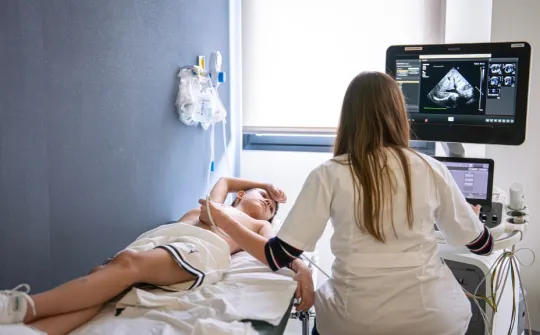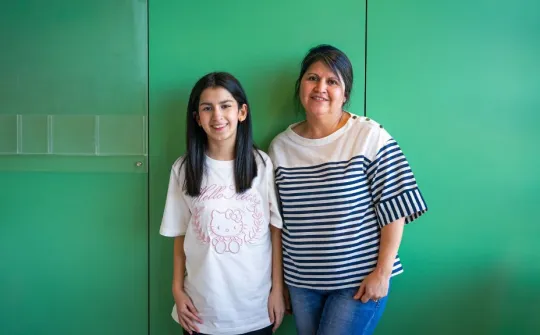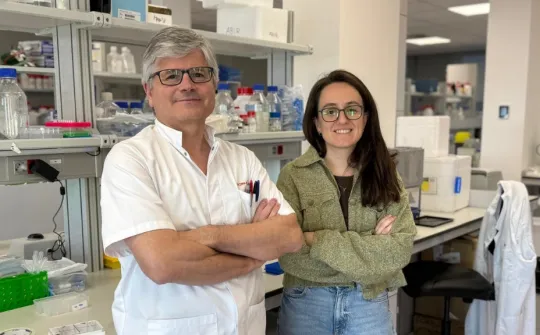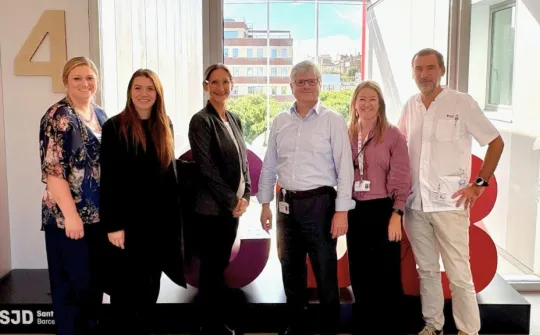"Being part of a clinical trial, thanks to the research, made us face the DIPG in a positive way"
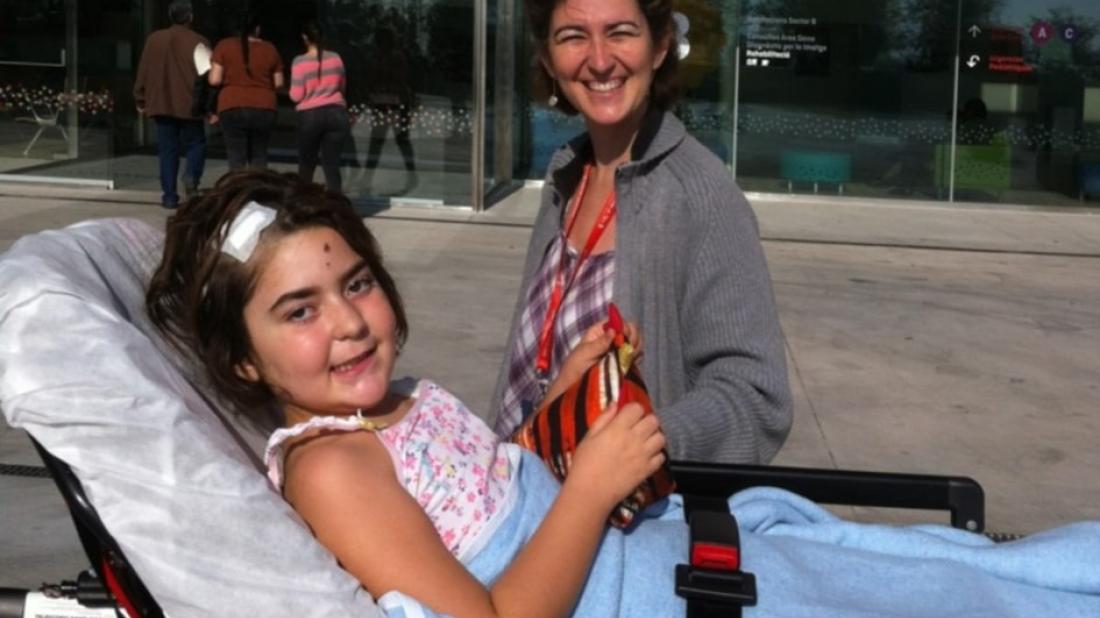
Sandra Bestraten, mother of a patient with diffuse intrinsic pontine glioma (DIPG) underlines the importance of research in the fight against childhood cancer
"Laia was a bit shy, but she had something within her that helped her connect with people: everyone knew her at school; she had a very special leadership quality". This is how Sandra presents her daughter Laia, who fought DIPG for almost 12 months and finally passed away at the age of 8, after participating in a pioneering clinical trial.
When did you realise something was happening to Laia and how was it diagnosed?
After an exciting holiday as usual in the village, in September 2016, Laia started experiencing intense headaches. One morning she woke up, smiled at me and said: "I can see two mummies". We were seen urgently and Laia was told that a lump had been found in the middle of her brain. They explained to us that this terrible lump, the DIPG, was a brain tumor that no child had yet managed to overcome.
Were there treatment options?
That year, a clinical trial was being conducted through the Oncology Department at SJD Barcelona Children's Hospital. Andrés Morales, the neuro-oncologist who conducted all of Laia's follow-up, explained to us that it was a vaccine containing dendritic cells, cells from Laia's immune system capable of generating a response that enables them to attack the tumours in a specific way. Once the radiotherapy was finished, they quickly did tests on Laia; they extracted these cells to "train" them, prepared vaccines and administered them, with the aim of fighting the glioma.
Whether or not a cancer like this is being researched is like night and day for patients and families.
How was the process for Laia and the rest of the family?
Being able to take part in a clinical trial, thanks to the research, made us face the DIPG in a positive way. There is a big difference between being told: "this tumour has no cure, there's nothing we can do", and being told: "no one has been cured of this type of tumour, but we're going to try it with this trial". In the first case you go home, you start counting down and you become desperate. However, even though with the vaccine we knew it would be difficult, that most children had not been cured, we put all our energy into a treatment that we saw as the whole point: to train Laia's own immune system cells to identify and fight the tumour.
I can't imagine having lived through this year without the trial. It was a very hard, but very positive time, intense, we were constantly looking to the future, playing with our kids a lot, and intensely living in the present. Whether or not a cancer like this is being researched is like night and day for the patients and families fighting it.
Does research significantly change your experience of the disease?
Absolutely. When you're told that your child has terminal cancer, it's terrible. However, when they tell you and explain to you that there is a lack of investment in researching childhood cancer because it isn't profitable, when it's a rare paediatric disease, I don't know what hurts more: the disease your child is suffering from or the difficulties in studying it, especially considering that cancer is the leading cause of child death in developed countries. They need resources to conduct the research, and we should never tire of saying it. It is very difficult to get funding because the main criteria for distributing funds is how many people will benefit from the research.
In this case, as developmental cancer is a rare disease, virtually no funds are allocated. This is devastating for the children who suffer from it and for society. For us, the hardest part of the DIPG was that the growth and expansion of the tumour gradually shuts down human capabilities: one day they stop moving their foot, the next day it is their hand, another day they stop swallowing, they stop seeing, and so on with all the functions, until they stop breathing. Managing the anxiety of waking up every day and not knowing what functions your child will lose is dramatic. However, Laia always found a way to overcome it and she left us speechless. It taught us a real lesson in overcoming difficulties.
Did you feel supported during this process?
From the very beginning. Andrés was giving us the necessary information at each stage of treatment and we decided not to look for information on the Internet or in sources outside the Hospital, something which helped us a lot. The Pediatric Palliative Care team not only accompanied Laia during her hospital follow-ups, but also her older brother, Pau, who was able to experience his sister's illness and death as a supported process. Both Pau and Laia trusted the team deeply, especially Dani (Daniel Toro), who helped them a lot during that stage. I think Laia admired Andrés a lot; a bond of trust formed between them and I think my daughter was convinced she was going to be cured, just like the whole family.
The clinical trial gave Laia a boost of energy.
In fact, we were able to benefit from the trial thanks to funds raised by many families in the decade before Laia became ill. Without the fundraising and tireless work of many people, it would have been impossible. We don't have the words to express our gratitude for this collaboration. We knew that the treatment was difficult, but we liked to think that, in any case, with our participation in the trial we were contributing to innovation, which could perhaps be applied to other types of cancer in order to avoid chemotherapy, which causes side effects. We even think it could open doors for cancer in adults.
Have you kept in touch with any family or similar associations?
During the illness, no, we wanted to live as normally as possible; although Laia was in a wheelchair, we continued doing most of the same activities and having the same friendships as always. But since she passed away, we keep in contact with several associations. However, for my part, I don't have the strength to help other families directly; I can't live through so much pain again.
In the last stage, I did collaborate with the hospital in a professional capacity, as president of the Col·legi d'Arquitectes de Catalunya (COAC, College of Architects of Catalonia). First, by thanking the architects Rosa Clotet and Jan Llongueras for the renovation of the hospital and for organising an event in the COAC to explain this innovation project through which, you can live out the most difficult moments of your life in warm, pleasant spaces, designed from a child's perspective. We also joined the "Para los valientes" ["For the brave"] dissemination campaign, to make the future Pediatric Cancer Center Barcelona (PCCB) possible. For that matter, we also invited Albert Pineda's architectural firm, PineArq, and I shared my suggestions for the future building as an architect and as a mother who has lived through her daughter's illness in a hospital that takes great care of its spaces.
Furthermore, when Laia was living out her last days, we had views of the Collserola mountain from the room. Many trees were missing in that area, apparently because of recurring fires. That's why, in May 2019, we organised a party during Architecture Week to plant trees because, symbolically, we are making something new and beautiful grow. We did it together with the COAC, Barcelona and Esplugues City Council, and Plant for The Planet, an organisation led by young people who seek to replant the planet. 1,000 people came and together they helped improve this landscape. Thanks to Laia, the research continues to advance and the hospital environment is now more alive.
